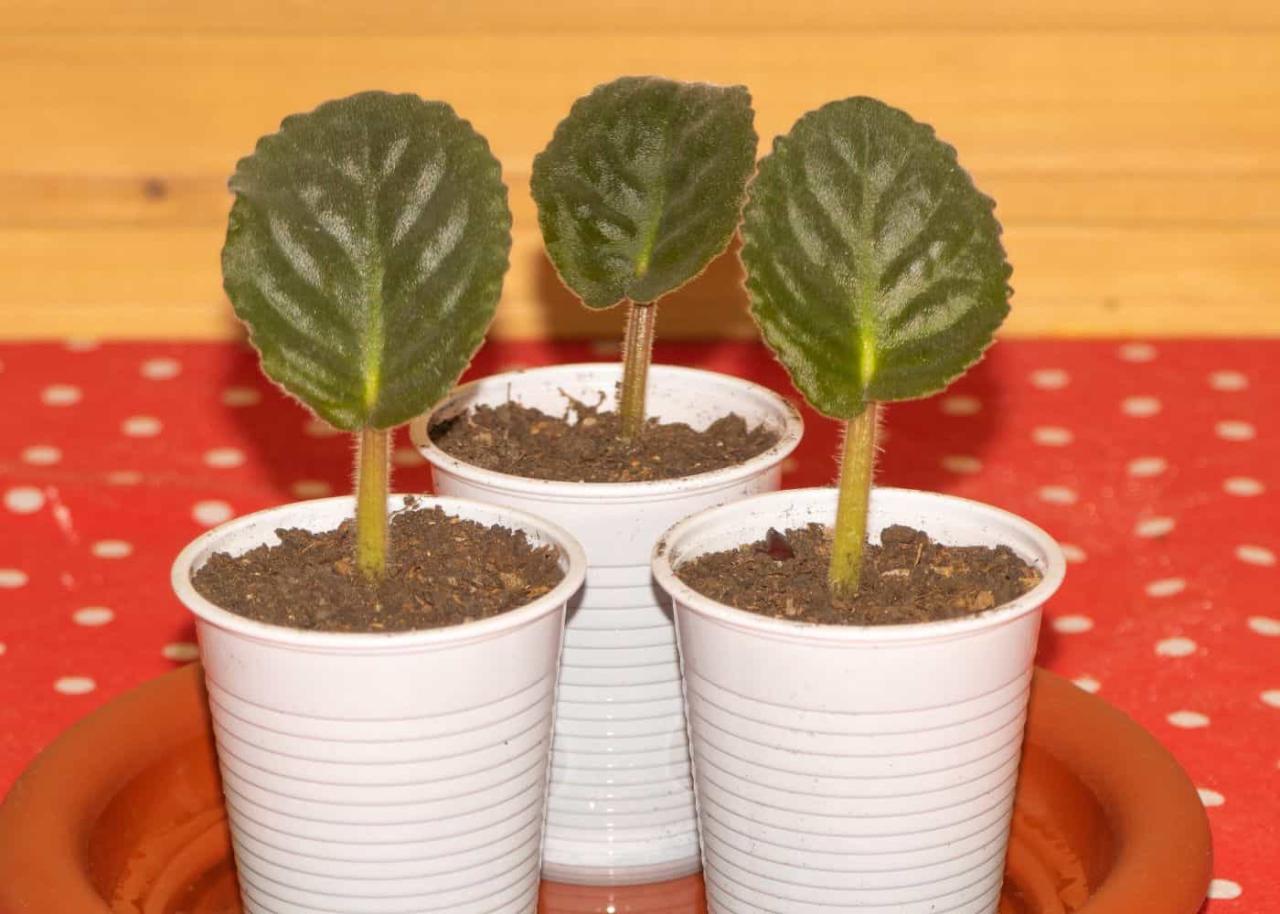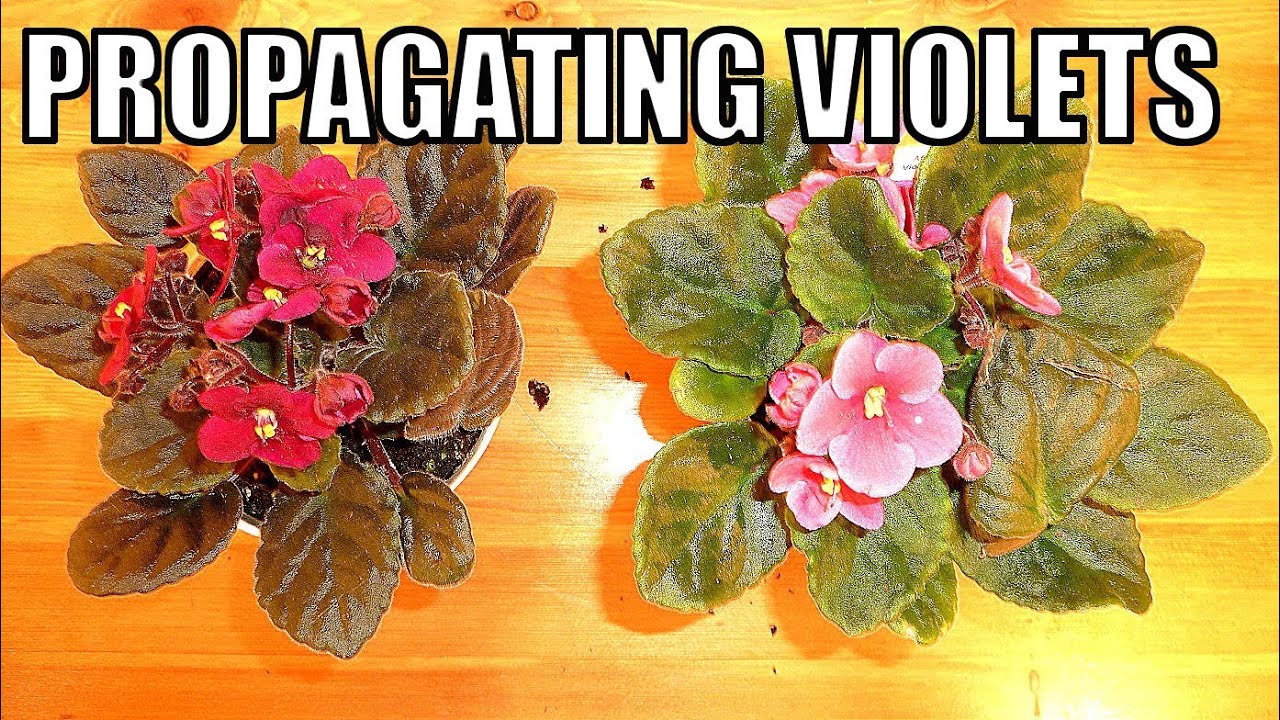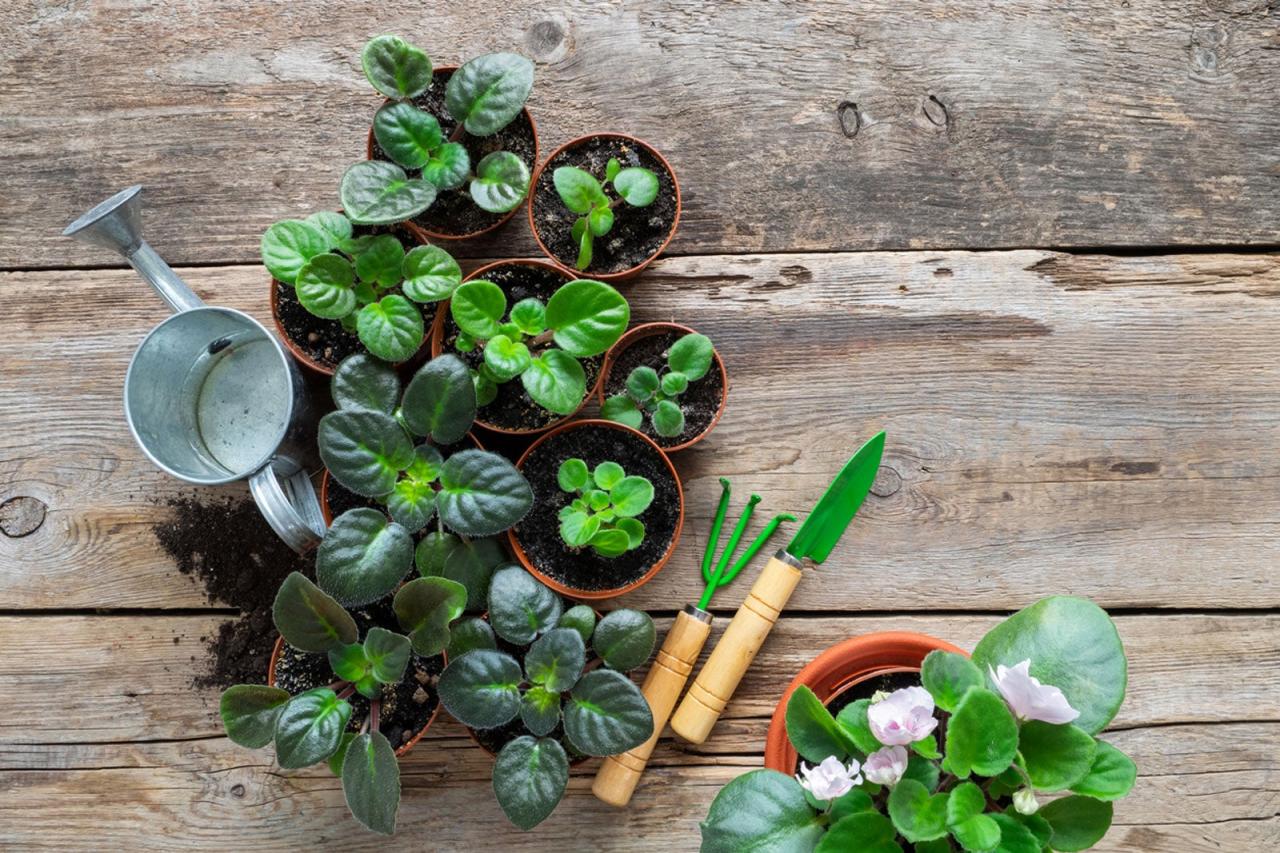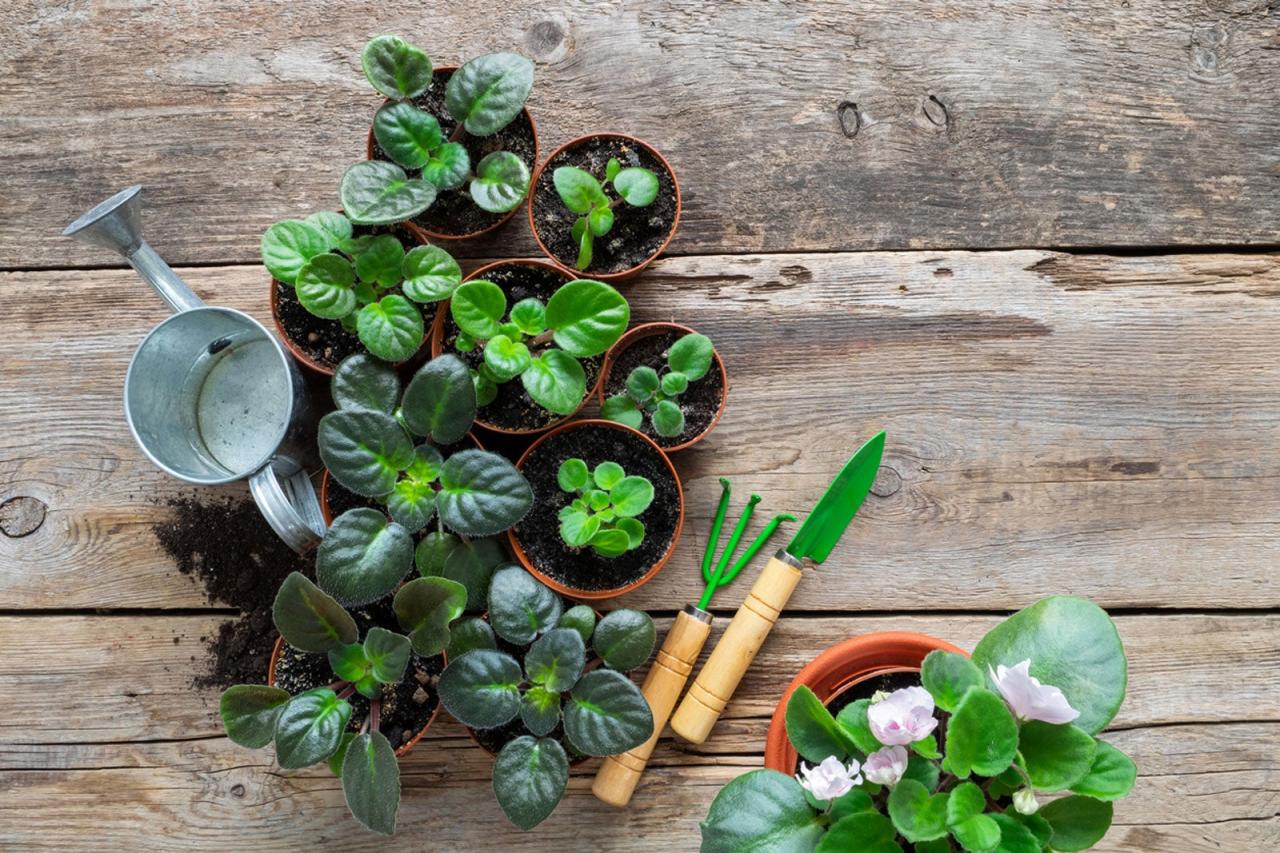Why Every Plant Lover Should Learn to Propagate African Violets? The answer is simple: these captivating plants are a gardener’s dream, offering a vibrant array of colors, patterns, and shapes, and they’re incredibly easy to multiply. African violets are not only visually stunning but also incredibly adaptable, thriving in a variety of indoor environments, from windowsills to terrariums.
Their delicate blooms and velvety leaves bring a touch of elegance to any space, and their ability to thrive indoors makes them perfect for even the most novice gardener.
Propagating African violets is not only rewarding but also incredibly beneficial. It allows you to expand your collection without spending a fortune on new plants, and it’s a sustainable way to enjoy these beauties. The process itself is surprisingly simple, requiring only a few basic tools and a little patience.
Whether you choose to propagate through leaf cuttings or stem cuttings, the results are equally satisfying, rewarding you with a flourishing collection of vibrant African violets.
The Beauty and Versatility of African Violets

African violets, scientifically known as Saintpaulia, are beloved houseplants renowned for their captivating beauty and ease of care. These diminutive flowering plants, native to the Usambara Mountains of Tanzania, offer a captivating array of colors, patterns, and textures, making them a cherished addition to any home.
The Diverse Range of African Violet Varieties
The allure of African violets lies in their remarkable diversity. Breeders have meticulously cultivated numerous varieties, each showcasing unique characteristics. From the classic velvety leaves of the “Blue Boy” to the intricate patterns of the “Pink Delight,” there’s an African violet for every taste.
- Color Variations:African violets come in a spectrum of colors, including vibrant blues, pinks, purples, reds, whites, and even bi-colors. These hues create a visually stunning display that brightens any space.
- Pattern Diversity:Beyond their captivating colors, African violets exhibit a fascinating array of patterns. Some varieties feature solid colors, while others boast intricate speckles, stripes, or even shimmering edges. This diversity allows for unique combinations and captivating contrasts.
- Leaf Shapes and Textures:The leaves of African violets also contribute to their visual appeal. They can be round, heart-shaped, or even ruffled, with velvety textures that feel soft to the touch. These variations in leaf shape and texture add depth and dimension to the plant.
The Captivating Blooms of African Violets
The blooms of African violets are truly mesmerizing. They are typically small, ranging from 1 to 2 inches in diameter, but their delicate petals and vibrant colors create a captivating spectacle.
- Bloom Sizes and Colors:African violet blooms come in a wide range of sizes and colors, from miniature varieties with tiny blossoms to larger cultivars with impressive blooms. Their vibrant hues, ranging from deep blues to soft pinks, create a stunning display that can brighten any room.
- Bloom Textures and Shapes:The petals of African violet blooms exhibit various textures and shapes. Some varieties feature smooth petals, while others have ruffled or fringed edges. The blooms can be single, double, or even semi-double, adding to their visual appeal.
- Blooming Period:African violets can bloom year-round, provided they receive adequate light and care. Their continuous blooming adds a touch of color and vibrancy to any indoor space.
Uses of African Violets in Home Decor
African violets are versatile houseplants that can enhance the aesthetic appeal of any room. Their compact size and captivating blooms make them suitable for various decorative purposes.
- Indoor Gardens:African violets thrive in indoor gardens, adding a touch of elegance and color. Their compact size allows for grouping them with other plants, creating a visually stunning display.
- Windowsills:Windowsills provide the perfect environment for African violets, offering ample sunlight and space for their growth. Their captivating blooms can brighten any windowsill, creating a cheerful atmosphere.
- Terrariums:African violets can also be incorporated into terrariums, creating miniature ecosystems that are both visually appealing and low-maintenance. Their compact size and tolerance for humidity make them ideal for these enclosed environments.
The Benefits of Propagating African Violets

Propagating African violets offers numerous advantages, ranging from economic savings to environmental benefits and personal fulfillment. By learning this simple technique, you can enjoy a flourishing collection of these beautiful plants while contributing to a more sustainable and fulfilling gardening experience.
Economic Benefits
Propagating African violets allows you to expand your collection without incurring the cost of purchasing new plants. This can be a significant saving, especially if you enjoy having many varieties. By taking cuttings or using leaf propagation methods, you can create new plants for free, effectively multiplying your investment.
African violets are a beloved houseplant, known for their vibrant blooms and ease of care. But what makes them truly special is their ability to be easily propagated, allowing you to expand your collection without breaking the bank. Learning how to propagate these beauties is a valuable skill, and with the right technique, you can ensure success every time.
Check out this helpful guide on How to Propagate African Violets Without Losing a Leaf! for tips on preventing leaf loss during propagation, making the process even smoother. With a little patience and practice, you’ll be well on your way to becoming a master propagator and filling your home with these stunning plants.
For example, a single African violet can be propagated to produce several new plants, allowing you to share them with friends, family, or even sell them for a small profit.
Environmental Benefits, Why Every Plant Lover Should Learn to Propagate African Violets
Propagating African violets promotes sustainable gardening practices by reducing the need for new plant purchases. This minimizes the environmental impact associated with plant production, such as the use of resources like water, fertilizers, and packaging materials. Furthermore, propagating African violets from cuttings or leaves reduces the amount of plant waste generated, as you can utilize existing plant material to create new plants.
Personal Fulfillment
Propagating African violets is a rewarding experience that fosters a sense of accomplishment and connection to nature. Successfully nurturing a cutting or leaf into a thriving plant is a testament to your gardening skills and patience. This process allows you to actively participate in the plant’s life cycle, witnessing its growth and development from a small cutting to a mature, flowering plant.
The satisfaction of creating new life and expanding your collection is a unique and fulfilling experience.
Simple and Effective Propagation Methods
African violet propagation is a rewarding and easy way to expand your collection or share these beautiful plants with friends and family. By understanding the basic principles of propagation, you can effortlessly create new plants from existing ones, enjoying the satisfaction of nurturing them from cuttings to blooming beauties.
Leaf Propagation
Leaf propagation is the most common and successful method for African violets. It involves taking a healthy leaf and encouraging it to develop roots and a new plant. Here’s a step-by-step guide to leaf propagation:
- Select a healthy leaf:Choose a mature, blemish-free leaf from the middle of the plant. Avoid leaves that are too young or too old, as they may not root as readily.
- Prepare the leaf:Using a clean, sharp knife or scissors, cut the leaf about 1 inch below the base. Make a clean cut to prevent damaging the leaf.
- Remove the lower portion:Trim the bottom 1/2 inch of the leaf stem to encourage root development.
- Rooting in water:Fill a clear glass or jar with water and place the leaf stem in the water, ensuring the base is submerged. Change the water every few days to prevent bacterial growth.
- Rooting in soil:Fill a small pot with African violet potting mix and moisten it thoroughly. Make a hole in the center of the soil and insert the leaf stem, ensuring that the cut end is buried about 1/2 inch deep.
- Nurturing the new plant:Place the pot in a bright, indirect light location and maintain a warm temperature around 70-75°F. Keep the soil moist but not soggy.
- Patience is key:It may take several weeks to a few months for the leaf to develop roots and a new plant. Be patient and observe the progress regularly.
Stem Cutting Propagation
Stem cuttings propagation is another effective method, using a portion of the plant’s stem to generate new growth. This method is often preferred for specific cultivars or when you want to maintain the plant’s original form.
African violets are prized for their vibrant blooms and velvety leaves, making them a beloved addition to any plant collection. Propagating these beauties is a rewarding experience, allowing you to expand your collection and share these treasures with others.
Learning the art of propagation is surprisingly simple, and a detailed guide like 10 Steps to Perfect African Violet Propagation Success will equip you with the knowledge to achieve success. With a little patience and practice, you’ll soon be enjoying the joy of nurturing new African violet plants from your own cuttings.
Visual Guide:
1. Cuttings Selection
Choose a healthy stem with at least two leaf nodes.
2. Cuttings Preparation
Make a clean cut just below a leaf node using a sharp knife or scissors. Remove the lower leaves from the cutting.
3. Rooting Medium
Fill a small pot with a rooting mix or use a water propagation method.
4. Planting Cuttings
Insert the prepared cutting into the rooting medium, ensuring the cut end is buried about 1 inch deep.
5. Optimal Conditions
Provide bright, indirect light and maintain a warm temperature around 70-75°F. Keep the rooting medium moist.
6. New Plant Development
After a few weeks, new roots will start to form. Once the roots are established, you can transfer the new plant to a larger pot with African violet potting mix.
Leaf vs. Stem Cutting Propagation
Method |
Pros |
Cons |
|---|---|---|
Leaf Propagation |
|
|
Stem Cutting Propagation |
|
|
Essential Tips for Success: Why Every Plant Lover Should Learn To Propagate African Violets

Propagating African violets successfully involves more than just taking cuttings. Understanding and implementing a few key principles will significantly increase your chances of success.
Sterile Tools and Materials
Maintaining a sterile environment is crucial for preventing disease and infection during propagation. The use of sterile tools and materials ensures that your cuttings are not introduced to harmful bacteria or fungi. This can significantly reduce the risk of rot and other problems.
- Use a sharp, sterile knife or scissors to take cuttings. Clean them with rubbing alcohol or a bleach solution before and after each use.
- Sterilize your potting mix by microwaving it for a few minutes or baking it in the oven. This eliminates any potential pathogens that could harm your cuttings.
- Use sterile pots and trays to avoid contamination.
Ideal Growing Conditions
Providing the right growing conditions is vital for successful propagation. African violets thrive in specific environments, and replicating these conditions will promote healthy root development and vigorous growth.
Light
African violets prefer bright, indirect light. Avoid direct sunlight, which can scorch their leaves. A south-facing window with a sheer curtain or a north-facing window can provide optimal light conditions.
Temperature
African violets prefer warm temperatures, ideally between 65-75 degrees Fahrenheit (18-24 degrees Celsius). Avoid placing them in drafty areas or near cold windows.
Humidity
African violets thrive in humid environments. Consider placing the pots on a tray filled with pebbles and water to increase humidity. You can also use a humidifier or mist the plants regularly.
Soil
African violets require a well-draining, airy potting mix. A mixture of peat moss, vermiculite, and perlite is a good option. Avoid heavy soils that can retain too much water, leading to root rot.
Watering and Fertilizing
Proper watering and fertilization are essential for the healthy growth and development of African violet cuttings.
Watering
Water African violet cuttings thoroughly, allowing excess water to drain. Allow the soil to dry slightly between waterings, as overwatering can lead to root rot.
Fertilizing
Use a balanced liquid fertilizer diluted to half strength every two weeks. Avoid fertilizing during the first few weeks after propagation, as the cuttings are still establishing roots.
Troubleshooting Common Propagation Challenges
While propagating African violets is generally straightforward, certain challenges can arise. Understanding these potential issues and their solutions is crucial for successful propagation. This section delves into common problems encountered during African violet propagation, providing practical solutions for overcoming them.
Root Rot
Root rot is a prevalent issue in African violet propagation, often caused by overwatering and poor drainage. When the soil remains excessively wet, it creates an environment conducive to fungal growth, leading to root damage.
- Symptoms:Wilting leaves, yellowing, and a foul odor from the soil are common signs of root rot.
- Solutions:
- Allow the soil to dry out completely between waterings.
- Use well-draining potting mix specifically formulated for African violets.
- Ensure the propagation container has adequate drainage holes.
- Consider using a fungicide, such as a diluted solution of copper sulfate, to treat the infected plants.
Fungal Infections
Fungal infections, like powdery mildew and botrytis blight, can affect African violet cuttings during propagation. These infections thrive in humid and poorly ventilated environments.
- Symptoms:Powdery mildew appears as a white, powdery coating on leaves, while botrytis blight causes brown, mushy spots and gray mold.
- Solutions:
- Provide adequate ventilation to reduce humidity.
- Avoid overcrowding cuttings to allow for air circulation.
- Use a fungicide specifically formulated for African violets to treat infected cuttings.
Slow Growth
Slow growth can be a sign of various issues, including inadequate light, nutrient deficiency, or improper temperature.
- Symptoms:Cuttings that fail to root or develop new growth indicate slow growth.
- Solutions:
- Ensure adequate light exposure. African violets thrive in bright, indirect light.
- Use a balanced fertilizer specifically formulated for African violets.
- Maintain a consistent temperature between 65°F and 75°F (18°C and 24°C).
Common Propagation Problems, Causes, and Solutions
Problem |
Cause |
Solution |
|---|---|---|
Root rot |
Overwatering, poor drainage |
Allow soil to dry out completely between waterings, use well-draining potting mix, ensure adequate drainage holes, consider using a fungicide. |
Fungal infections |
High humidity, poor ventilation |
Provide adequate ventilation, avoid overcrowding cuttings, use a fungicide specifically formulated for African violets. |
Slow growth |
Inadequate light, nutrient deficiency, improper temperature |
Ensure adequate light exposure, use a balanced fertilizer specifically formulated for African violets, maintain a consistent temperature between 65°F and 75°F (18°C and 24°C). |
Final Conclusion
Propagating African violets is a rewarding experience that opens a world of possibilities for plant lovers. With a little knowledge and practice, you can easily create new plants from cuttings, expanding your collection and sharing your passion with others.
The process is not only simple but also sustainable, allowing you to enjoy the beauty of these captivating plants while minimizing your environmental impact. So, why not give it a try? You might just discover a new favorite hobby.
Commonly Asked Questions
What are the best tools for propagating African violets?
You’ll need a sharp knife or scissors for making cuttings, a small pot or container for rooting, and a well-draining potting mix. You may also want to use rooting hormone to encourage faster root development.
How often should I water my African violet cuttings?
Keep the rooting medium slightly moist but not soggy. Water when the top inch of the soil feels dry to the touch.
How long does it take for African violet cuttings to root?
It typically takes 4-6 weeks for African violet cuttings to develop roots, but it can vary depending on the method and environmental conditions.
What are the signs of a healthy African violet cutting?
Healthy cuttings will have firm, green leaves and new growth emerging from the base. You may also see small roots developing at the base of the cutting.
